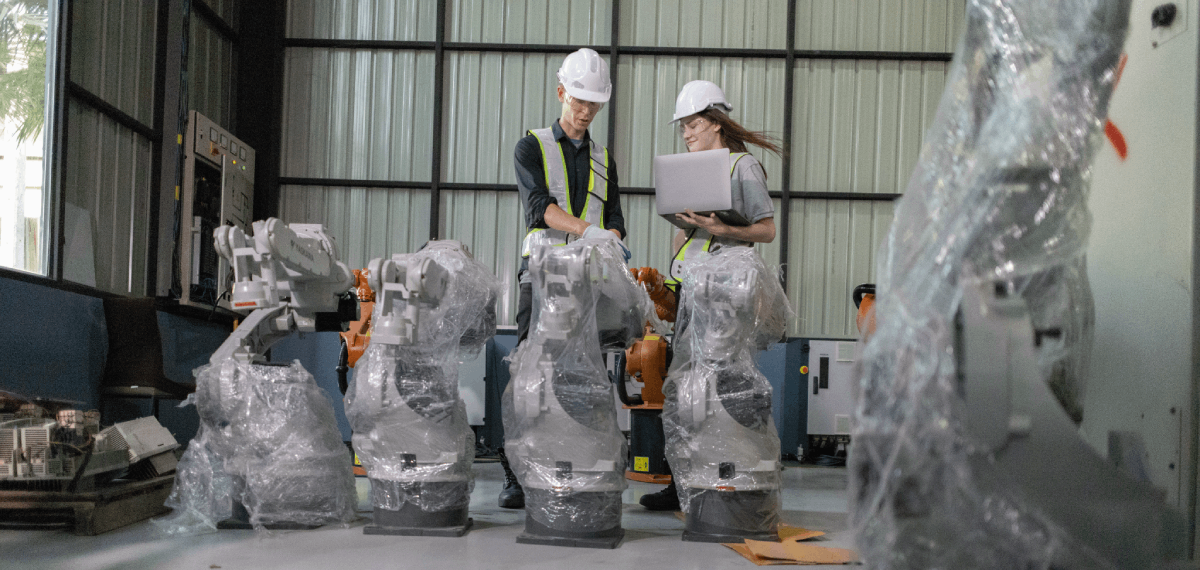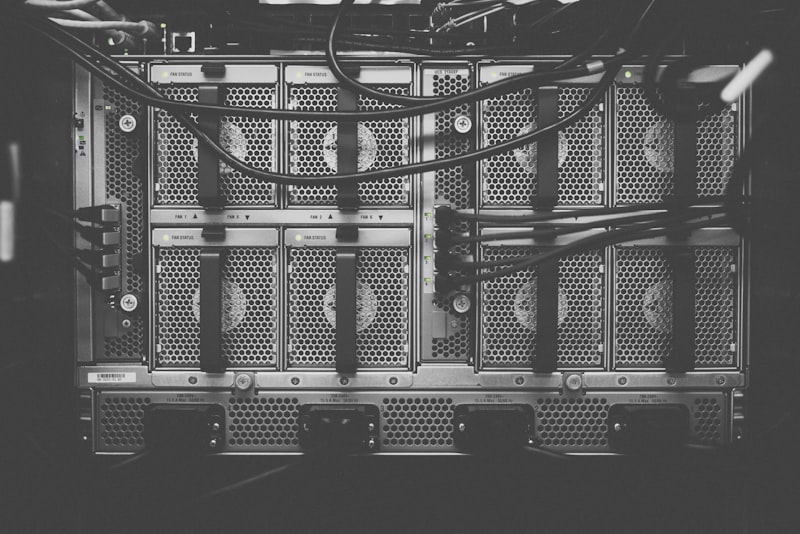What Are the Potential Applications of Swarm Robotics?
One of the most promising applications of swarm robotics is in search and rescue missions. Imagine a disaster scenario where conventional methods struggle due to debris or hazardous conditions. Swarm robots equipped with sensors and cameras can navigate through rubble, communicate their findings in real-time, and coordinate efforts to locate survivors efficiently. This capability not only improves the speed and effectiveness of rescue operations but also minimizes risks to human responders.
In agriculture, swarm robotics is transforming crop management and harvesting. Instead of relying solely on manual labor or large, single-purpose machines, fleets of small agricultural robots can work collaboratively in fields. They can plant seeds, monitor crop health, apply fertilizers and pesticides precisely where needed, and even harvest crops at optimal times. This approach leads to higher yields, reduced resource use, and overall sustainability in farming practices.
Another exciting frontier for swarm robotics is in space exploration. In environments like Mars, where communication delays and harsh conditions pose significant challenges, swarms of robots can autonomously explore terrain, build structures, and conduct scientific experiments. This decentralized approach ensures that even if some robots fail or encounter difficulties, the mission can still proceed effectively.
Beyond these specific applications, swarm robotics holds promise in logistics, construction, environmental monitoring, and even entertainment. As technology advances and researchers delve deeper into the potential of swarm intelligence, we can expect to see more innovative uses emerge, further pushing the boundaries of what robots can achieve collectively.
Revolutionizing Disaster Response: How Swarm Robotics Can Aid in Search and Rescue

Swarm robotics is not about large, singular robots tackling tasks alone. Instead, it’s about a collective intelligence of multiple small robots working together seamlessly, like a synchronized team of expert rescuers. These robots are designed to communicate instantly, making decisions collaboratively based on real-time data from their surroundings. Just picture a swarm of bees, each one aware of its role in the hive, working together towards a common goal. Similarly, swarm robots operate in unison, navigating through debris, locating survivors, and even delivering essential supplies with unparalleled speed and accuracy.
One of the key advantages of swarm robotics in disaster response is its adaptability to dynamic and unpredictable environments. Unlike traditional robots that may struggle with complex terrains or changing conditions, swarm robots excel precisely because they can distribute tasks among themselves. For instance, while one robot scans for signs of life in a collapsed building, another could be mapping out the safest route for human rescuers to follow.
Moreover, these robots are not just limited to land-based operations. Some swarm robotics projects also explore underwater applications, where teams of aquatic robots can inspect submerged structures or search for survivors in areas inaccessible to human divers.
The potential of swarm robotics in search and rescue goes beyond efficiency. It also enhances safety for human responders by taking on tasks that are dangerous or physically demanding. Imagine sending a swarm of robots into a hazardous environment first, gathering crucial data and identifying risks before human teams enter the scene.
As technology advances, so too does the promise of swarm robotics in disaster response. With ongoing research and development, these robots are becoming smarter, more agile, and better equipped to handle a wide range of challenges. From earthquakes to hurricanes, from urban disasters to remote wilderness rescues, swarm robotics is poised to be a transformative force in how we respond to emergencies, saving more lives and minimizing risks in the process.
From Factories to Fields: Swarm Robotics Transforming Agriculture Efficiency
Swarm robotics refers to a field where multiple robots work together like a cohesive unit, much like a colony of ants or a flock of birds. In agriculture, this means deploying numerous small robots across fields to perform tasks autonomously yet in synchronization with each other. Imagine a fleet of these robots moving seamlessly through crops, planting seeds with precision, monitoring plant health, and even harvesting produce at optimal times.
The impact of swarm robotics on agriculture efficiency is profound. These robots can cover large areas efficiently and quickly, reducing the manpower required and minimizing the use of resources such as water and fertilizers. By precisely targeting where and when actions are needed, they optimize crop yields while minimizing waste, aligning perfectly with sustainable farming practices.
One of the key advantages of swarm robotics lies in its adaptability to different terrains and crops. Whether it’s vineyards on sloping hillsides or vast fields of grain, these robots can navigate through varied landscapes with ease, making agriculture more accessible and productive in diverse environments.
Moreover, the data gathered by these robots isn’t just about immediate tasks; it’s about long-term insights that can improve farming strategies over time. By collecting data on soil quality, weather patterns, and crop growth rates, swarm robotics enables farmers to make data-driven decisions that maximize productivity and minimize environmental impact.
Exploring the Ocean Depths: Swarm Robotics in Marine Exploration
Swarm robotics refers to a fleet of small, autonomous robots working together like a colony of ants to achieve complex tasks. In the realm of marine exploration, these tiny marvels are becoming indispensable. Picture this: a swarm of underwater robots, each equipped with sensors and cameras, descending into the darkest corners of the ocean. They move in unison, communicating seamlessly to map terrains, collect data on marine life, and even discover hidden shipwrecks.
What makes swarm robotics so effective underwater? Unlike traditional large-scale vehicles, these robots can navigate tight spaces with ease, reaching depths and environments previously inaccessible. They mimic nature’s efficiency, spreading out to cover vast areas while maintaining constant communication. It’s like sending a team of skilled divers, each with specialized knowledge, into the abyss.
The applications are mind-boggling. From monitoring delicate coral reefs to tracking elusive marine species, swarm robotics offers a non-intrusive approach. Imagine tracking the migration patterns of whales without disturbing their natural habitat or studying volcanic vents without risking human lives.
Moreover, these robots are not just passive observers. They can adapt to changing conditions in real-time, making autonomous decisions based on the data they collect. This adaptability is crucial in unpredictable ocean environments where conditions can shift in an instant.

Smart Cities of Tomorrow: The Role of Swarm Robotics in Urban Planning
Swarm robotics takes inspiration from nature’s swarms – think of schools of fish or flocks of birds that move in harmony without a central command. Similarly, swarm robots work collaboratively, communicating with each other to accomplish tasks that are beyond the capabilities of individual robots. In the context of urban planning, this means these robots can monitor, analyze, and even modify their environment autonomously.
One of the most promising applications of swarm robotics in smart cities is infrastructure maintenance. Picture robots inspecting bridges and roads, detecting cracks or weaknesses long before they become hazardous. These robots can work tirelessly, day and night, minimizing disruption to daily life while ensuring the safety and longevity of urban infrastructure.
Moreover, swarm robotics can play a pivotal role in disaster response. During emergencies such as earthquakes or floods, these robots can swiftly navigate through debris-filled areas, searching for survivors or assessing structural damage. Their agility and ability to collaborate ensure that emergency responders have real-time data to make informed decisions, potentially saving lives in critical situations.
In addition to maintenance and disaster response, swarm robotics enhances everyday city functions. From optimizing traffic flow to managing waste disposal, these robots can gather and process data in real-time, providing city planners with invaluable insights for decision-making. Imagine reducing traffic congestion not just through smart signals, but through a fleet of robots coordinating to reroute vehicles efficiently.
Precision Medicine Advances: Swarm Robotics in Minimally Invasive Surgery
Imagine a future where surgery isn’t just precise—it’s orchestrated by a swarm of tiny robots, each working with the precision of a master craftsman. Swarm robotics in minimally invasive surgery is not just a concept from science fiction; it’s a revolutionary leap in medical technology that promises to redefine how we approach surgical procedures.
So, what exactly are swarm robotics? Picture this: a group of miniature robots, each equipped with specialized tools and sensors, working together seamlessly inside the human body. These robots move with incredible accuracy, guided by advanced algorithms that ensure they navigate through delicate tissues and organs with the utmost care. It’s like having a team of expert surgeons, each focusing on a specific task, all coordinated to achieve a common goal.
The beauty of swarm robotics lies in their collaborative nature. Just like ants building a complex structure or birds flying in formation, these robots communicate and coordinate their actions in real-time. This synchronized movement allows them to perform intricate maneuvers that would be impossible for a single robot or human surgeon alone.
One of the key benefits of swarm robotics in surgery is its potential to minimize trauma. Unlike traditional open surgeries that require large incisions, minimally invasive procedures using swarm robotics involve tiny ports through which these robots can enter. This approach reduces recovery times, lowers the risk of infection, and often leads to better outcomes for patients.
Moreover, these robots can access hard-to-reach areas within the body, reaching places that conventional surgical instruments cannot. Imagine a scenario where a tumor deep within the brain or a blockage in a narrow blood vessel can be precisely targeted and removed without the need for extensive surgery. Swarm robotics make this vision a reality.

Swarm robotics in minimally invasive surgery represents a remarkable advancement in precision medicine. By harnessing the power of collaboration among miniature robots, medical professionals can deliver more precise treatments with reduced risks and improved outcomes for patients. This technology isn’t just pushing the boundaries of what’s possible in surgery—it’s redefining them entirely.
